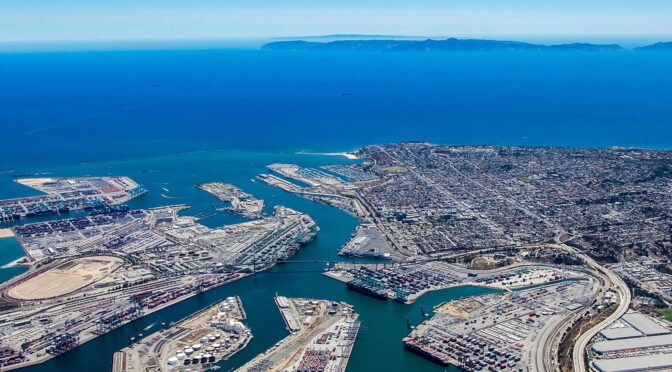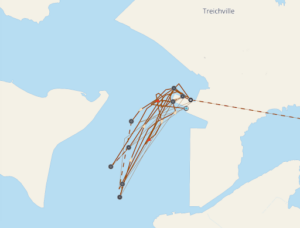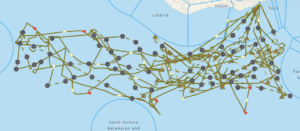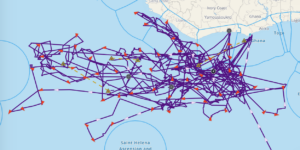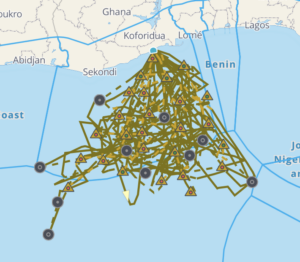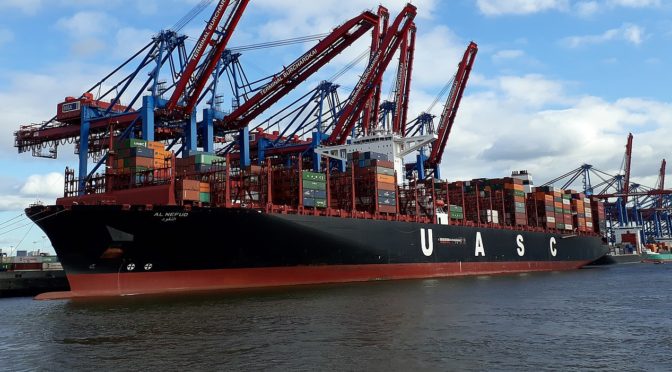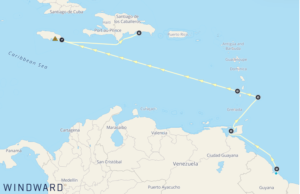By Thomas “Buddy” Bardenwerper
Introduction
Every day, U.S. Coast Guard cutters patrol the eastern Pacific Ocean and Caribbean Sea for drug smuggling vessels, seizing more cocaine than all other American law enforcement agencies combined. Federal prosecutors then bring charges against the detained smugglers under a controversial and confusing legal regime. By analyzing the lifecycle of a case – from interdiction to detention to prosecution – this two-part article explores (1) the extraterritorial jurisdiction established by the Maritime Drug Law Enforcement Act (MDLEA); (2) the practice of detaining suspected smugglers aboard Coast Guard cutters for weeks without formal arrest; and (3) the interaction between intelligence gathering and the trial penalty. In each of these instances, a different branch of the federal government is pushing against – if not overstepping – legal constraints in order to empower the Coast Guard in the fight against maritime drug smuggling. This is a fragile system, however, and should one of these government branches become squeamish, the whole apparatus could collapse.
Overview of the Coast Guard’s Counter-Maritime Drug Trafficking Mission
The Coast Guard is both an armed service and a federal law enforcement agency. While the Army, Air Force, Navy, and Marine Corps are barred from conducting law enforcement operations by the Posse Comitatus Act 1 and other federal law,2 the Coast Guard is not.3 Therefore, the Coast Guard has become the lead federal agency for maritime law enforcement on the high seas, which are those waters that fall outside of any nation’s twelve-nautical-mile territorial seas.4
The Coast Guard’s maritime law enforcement mission pits a small sea-going service of approximately 40,000 active duty members against powerful transnational criminal organizations (TCOs). TCOs use various means to transport cocaine north from coca producers in Colombia, Peru, and Bolivia to cocaine consumers in the United States. Maritime smuggling is a preferred option for transport that generally occurs in one of the following two ways: 1) Cocaine is transported by boat from the Pacific coast of South America to the Pacific coast of Central America, at which point shipments are divided into smaller loads for overland transit through Mexico and across the border; or, to a lesser extent, 2) cocaine is transported by boat from the Caribbean coast of South America to either the Caribbean coast of Central America or to various Caribbean islands for further transit – again, in smaller quantities – to the United States. Competition for these drug trafficking corridors has caused destabilizing violence throughout the hemisphere.
The modes of maritime transit can be roughly grouped into the following three categories: slow-movers, go-fasts, and hard-to-detects.5 “Slow-movers” include commercial fishing vessels and coastal freighters outfitted with secret compartments or parasitic devices. Oftentimes, only certain crewmembers are even aware that their vessel is being used for illegal purposes. “Go-fasts” are speedboats that carry contraband openly on deck and rely on speed and maneuverability to evade law enforcement assets. “Hard-to-detects” include low-profile and semi-submersible vessels that are virtually impossible to detect via visual or electronic sensors.
For any successful interdiction, the Coast Guard must be able to find the suspect vessel, stop it, and locate the contraband. The relative difficulty of these tasks varies depending on whether a particular case involves a slow-mover, a go-fast, or a hard-to-detect. In order to find the target of interest, Coast Guard operational planners rely on intelligence regarding the suspect vessel’s anticipated movements. In order to stop the target of interest, Coast Guard law enforcement teams then employ warning shots and disabling fire from agile small boats or helicopters. Finally, in order to locate the contraband, Coast Guard boarding teams use complex space accountability computations and state-of-the-art drug detection equipment.
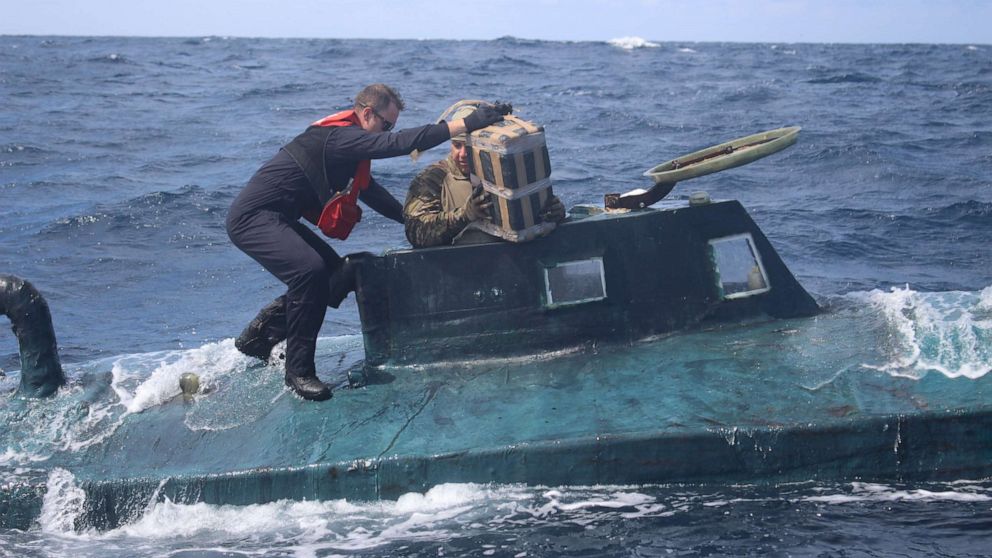
This sophisticated operational and tactical regime only works when and where the Coast Guard has the legal authority to pursue its counter-maritime drug trafficking mission. Thanks to the aggressive legislation, favorable judicial holdings, and proactive executive actions that will be explored below, the Coast Guard enjoys a great degree of latitude in combatting TCOs on the high seas.
Far-Flung Interdictions and the Extraterritorial Jurisdiction of the MDLEA
The Coast Guard can only operate if it has jurisdiction.6 In those situations where there is a clear nexus with the United States – i.e. a target of interest is in U.S. territorial seas, the vessel itself is American-flagged, or the master is a U.S. citizen – jurisdiction is easily achieved. However, when none of those three boxes is checked – as they rarely are in drug smuggling cases – the legal picture is less clear. Given this lack of clarity, how is it that the Coast Guard can board non-U.S. vessels in non-U.S. waters to detain foreign nationals?
The answer to this question is the Maritime Drug Law Enforcement Act (MDLEA), which Congress passed in 1986.7 Grounded in Congress’s Constitutional power to “define and punish Piracies and Felonies committed on the High Seas, and Offences against the Law of Nations,”8 the statute made “drug smuggling on the high seas a crime against the United States and [gave] the Coast Guard the authority to search for, detain, and bring suspected drug traffickers back to the United States for prosecution.”9 Under the conspiracy provision of the MDLEA, even members of trafficking networks who have never set foot on a boat can be extradited to the U.S.10 The most important – and controversial – portion of the MDLEA, however, is that section which extends U.S. jurisdiction over the following six categories of vessels: (1) a vessel without nationality (also known as “stateless”); (2) a vessel assimilated to without nationality;11 (3) a foreign-flagged vessel if the flag state consents or waives objection to the enforcement of United States law; (4) a vessel in U.S. customs waters; (5) a vessel in the territorial seas of another nation if that nation consents to the enforcement of United States law; and (6) a vessel in the U.S. contiguous zone.12
The U.S. government had to be creative in justifying a statute with this degree of extraterritorial reach since universal jurisdiction does not apply to drug smuggling – it is not illegal under customary international law13 – and it is difficult to prove that a particular shipment of narcotics seized in the eastern Pacific Ocean or Caribbean Sea is destined for the United States. Instead, the ostensibly aggressive approach taken by the U.S. government can be tied to the protective principle of international law. Because of “the deleterious effects of drug trafficking in the United States and on regional stability,”14 the U.S. government considers itself justified in proactively combatting this threat through law enforcement operations well beyond its borders.15
Because most Western Hemisphere governments are in favor of fighting drug trafficking, there has been relatively little international pushback against the MDLEA. Furthermore, the reach of the MDLEA is heavily dependent upon the cooperation of international allies, especially with regards to those categories of vessels subject to U.S. jurisdiction. In exchange for economic and military aid, many source and transit zone nations have signed bilateral agreements with the United States.16 These agreements often give the U.S. Coast Guard the authority and jurisdiction to conduct operations in partner-state territorial seas or against partner-state-flagged vessels.17 Not surprisingly, this particularly ambitious jurisdictional aspect of the MDLEA has garnered significant scrutiny from U.S. courts.
MDLEA Jurisdiction over Foreign-Flagged Vessels Boarded with Flag-State Approval
Foreign nationals charged with violating the MDLEA have had varying degrees of success challenging the statute’s extraterritorial jurisdiction. While all circuits recognize U.S. jurisdiction over stateless vessels18 (and their occupants19) – which includes most go-fasts and virtually all hard-to-detects – there is disagreement regarding foreign-flagged vessels boarded by the Coast Guard with flag-state approval. The Ninth Circuit is the most defendant-friendly forum for this issue.
In United States v. Perlaza, the Ninth Circuit reversed the MDLEA convictions of Colombian nationals caught smuggling cocaine aboard a Colombian-flagged fishing vessel. The court held that although the Colombian government granted the Coast Guard permission to board the vessel and detain the crewmembers, the Fifth Amendment right of due process required that “for a United States court to properly exercise jurisdiction [over a foreign-flagged vessel], the Government still needs to establish some detrimental effect within, or nexus to, the United States.”20 The court reasoned that a defendant aboard a foreign-flagged vessel “would have a legitimate expectation that because he has submitted himself to the laws of one nation, other nations will not be entitled to exercise jurisdiction without some nexus.”21 From the government’s perspective, this analysis has made the Ninth Circuit an undesirable forum for many MDLEA cases, an issue that will be discussed further below.
The First and Eleventh Circuits – which handle many MDLEA cases through Puerto Rico and Florida, respectively – have not required a U.S. nexus for MDLEA prosecutions of foreign nationals detained aboard foreign-flagged vessels boarded with flag-state approval. In United States v. Trapp, for example, the District of Puerto Rico denied a motion to dismiss an MDLEA indictment brought by foreign nationals detained aboard a Grenadian-flagged vessel on the high seas after Grenada “waive[d] its primary right to exercise jurisdiction over the [vessel], its cargo, and its crew to the extent necessary for the enforcement of United States law.”22 The court held that the “MDLEA contains no explicit requirement that there be a nexus between a defendant’s criminal conduct and the United States” and that “a vessel ‘subject to the jurisdiction of the United States’ is defined to include ‘a vessel registered in a foreign nation if that nation has consented or waived objection to the enforcement of United States law by the United States.’”23
Likewise, the Eleventh Circuit has found the application of the MDLEA to foreign-flagged vessels boarded with flag-state approval to be constitutional24 because (1) Congress allowed for this in § 70502(c)(1)(C) of the MDLEA;25and (2) the MDLEA is grounded in the “protective principle,” which “does not require that there be proof of an actual or intended effect within the United States.”26 By not finding any Fifth Amendment concerns with this critical aspect of the MDLEA’s extraterritorial jurisdiction, the First and Eleventh Circuits are government-friendly venues for this particular strain of cases. Therefore, it is unsurprising that the U.S. Attorney’s Offices for the Middle District of Florida and the District of Puerto Rico have permanent billets for Coast Guard lawyers.
MDLEA Jurisdiction over Vessels Boarded in Foreign Territorial Seas with Coastal State Approval
The application of the MDLEA to defendants interdicted in a foreign nation’s territorial seas with that nation’s approval was recently held unconstitutional by the government-friendly Eleventh Circuit in United States v. Davila-Mendoza, a case involving a Coast Guard interdiction made in Jamaican territorial seas with the approval of the Jamaican government.27 The court held that the MDLEA was unconstitutionally applied in Jamaica’s territorial seas – regardless of whether or not Jamaica had consented – because extraterritorial jurisdiction beyond the high seas was not justified by the “Foreign Commerce Clause,” the “Necessary and Proper Clause,”28 the “law of nations,”29 or the “Define and Punish clause.”30 Whether this ruling stands, however, remains to be seen, as the case may be appealed to the Supreme Court.31 If it does stand, existing bilateral agreements between the United States and many of its regional allies will lose some of their potency since Coast Guard cutters will no longer be able to target smuggling vessels located within those partner nations’ territorial seas.
MDLEA Jurisdiction Takeaways
All circuits agree that the MDLEA applies to foreign nationals smuggling drugs on the high seas aboard stateless vessels. However, prosecutions become more difficult in the Ninth Circuit if a foreign-flagged vessel is involved and are impossible in any circuit if the interdiction is made in foreign territorial seas. Nonetheless, the reach of the MDLEA is impressive. Through aggressive lawmaking and international deal-making, the U.S. government has created a legal environment that allows its maritime forces to dominate the eastern Pacific Ocean and Caribbean Sea. Both the domestic need for a robust law enforcement presence and the lack of any meaningful international resistance – save from perhaps Venezuela – has made this expansive dominion possible, one upon which the U.S. maritime counter-drug mission is built.
The second installment of this article will discuss the prolonged detention of suspected smugglers aboard Coast Guard cutters and the interaction between intelligence gathering and the trial penalty during prosecution. Read Part Two here.
Thomas “Buddy” Bardenwerper (@TBardenwerper89) served for five years as a Coast Guard officer assigned to cutters homeported in Maine and Puerto Rico. Thanks to the GI Bill and Yellow Ribbon Program, Bardenwerper will graduate with a joint degree from Harvard Law School and the Harvard Kennedy School of Government this spring. His maritime migration-related novel Mona Passage will be published by Syracuse University Press in December.
References
[1] 18 U.S.C. § 1385 (1994) (“Whoever, except in cases and under circumstances expressly authorized by the Constitution or Act of Congress, willfully uses any part of the Army or the Air Force as a posse comitatus or otherwise to execute the laws shall be fined under this title or imprisoned not more than two years, or both.”).
[2] 10 U.S.C. § 275 (2016) (“The Secretary of Defense shall prescribe such regulations as may be necessary to ensure that any activity (including the provision of any equipment or facility or the assignment or detail of any personnel) under this chapter does not include or permit direct participation by a member of the Army, Navy, Air Force, or Marine Corps in a search, seizure, arrest, or other similar activity unless participation in such activity by such member is otherwise authorized by law.”).
[3] 14 U.S.C. § 102 (2018) (“The Coast Guard shall enforce or assist in the enforcement of all applicable Federal laws on, under, and over the high seas and waters subject to the jurisdiction of the United States.”).
[4] 33 C.F.R. § 2.32(a) (2020) (“For purposes of special maritime and territorial jurisdiction of the United States […] high seas means all waters seaward of the territorial sea baseline.”).
[5] While “go-fast” is a commonly used term, the author came up with “slow-mover” and “hard-to-detect” for ease of explanation.
[6] 14 U.S.C. § 89 (2018) (“The Coast Guard may make inquiries, examinations, inspections, searches, seizures, and arrests upon the high seas and waters over which the United States has jurisdiction, for the prevention, detection, and suppression of violations of laws of the United States.”).
[7] 46 U.S.C. §§ 70501-08 (2008).
[8] United States v. Campbell, 743 F.3d 802, 805 (11th Cir. 2014) (quoting U.S. Const. Art. 1, § 8, cl. 10).
[9] Stringer, Morgan, The U.S. Coast Guard Is Arresting Drug Traffickers in Ecuadorian Waters. How Does That Work?, The Water Log 7 (The University of Mississippi Press, 2018).
[10] See e.g. United States v. Ballestas, 795 F.3d 138, 145 (D.C. Cir. 2015) (holding that because the substantive offense established by § 70503(a) of the MDLEA applies extraterritorially, so too does the conspiracy offense established by § 70506(b)); United States v. Mosquera-Murillo, 902 F.3d 285, 289 (D.C. Cir. 2018) (“We have held that a defendant can violate the [MDLEA’s] conspiracy provision without personally setting foot on board a covered vessel.”).
[11] Article 6.2 of the United Nations Convention on the High Seas (1958) (“A ship which sails under the flags of two or more states, using them according to convenience, may not claim any of the nationalities in question with respect to any other state, and may be assimilated to a ship without nationality.”).
[12] 46 U.S.C. § 70502(c) (2008).
[13] Aaron Casavant, In Defense of the U.S. Maritime Drug Law Enforcement Act: A Justification for the Law’s Extraterritorial Reach, 8 Harv. Nat’l. Security J. 191, 197 (2017).
[14] Casavant, 197.
[15] See 46 U.S.C. § 70501 (2008) (“Congress finds and declares that (1) trafficking in controlled substances aboard vessels is a serious international problem, is universally condemned, and presents a specific threat to security and societal well-being of the United States.”).
[16] Joseph Kramek, Bilateral Maritime Counter-Drug and Immigrant Interdiction Agreements: Is This the World of the Future?, 31:1 U. of Miami Inter-American L. Rev. 121, 146 (2000).
[17] Id. at 124.
[18] See e.g. United States v. Perlaza, 439 F.3d 1149, 1161 (9th Cir. 2006) (“There is one exception, however, to this ‘constitutional jurisdiction’ requirement: ‘if a vessel is deemed stateless, there is no requirement that the government demonstrate a nexus between those on board and the United States before exercising jurisdiction over them.’”); United States v. Van Der End, 943 F.3d 98, 105 (2d. Cir. 2019) (“MDLEA prosecutions involving stateless vessels do not present the same concerns that are present in the extraterritorial application of typical criminal statutes [because] stateless ‘vessels are international pariahs’ that ‘subject themselves to the jurisdiction of all nations.”).
[19] See United States v. Aybar-Ulloa, 987 F.3d 1, 1 (1st Cir. 2021) (“International law accepts the criminal prosecution by the United States of persons like Aybar, who was seized by the United States while trafficking cocaine on a stateless vessel on the high seas, just as if they were trafficking on a United States-flagged ship”.”); United States v. Cabezas-Montano, 949 F.3d 567, 587 (11th Cir. 2020) (“The Fifth Amendment’s Due Process Clause does not prohibit the trial and conviction of aliens captured on the high seas while drug trafficking because the MDLEA provides clear notice that all nations prohibit and condemn drug trafficking aboard stateless vessels on the high seas.”).
[20] Perlaza, 439 F.3d at 1169.
[21] Id. (quoting United States v. Klimavicius-Viloria, 144 F.3d 1249, 1257 (9th Cir. 1998)).
[22] United States v. Trapp, Crim. No. 16-159, 2017 WL 2821904 at *1 (D.P.R. 2017).
[23] Id. at *2 (quoting 46 U.S.C. § 70502(c)(1)(C)).
[24] See United States v. Castillo, 899 F.3d 1208, 1212 (11th Cir. 2018) (upholding the MDLEA conviction and sentence of a foreign national detained aboard a Guatemalan-flagged vessel).
[25] 46 U.S.C. § 70502(c)(1)(C) (2008) (“A ‘vessel subject to the jurisdiction of the United States’ includes a vessel registered in a foreign nation if that nation has consented or waived objection to the enforcement of United States law by the United States.”).
[26] United States v. Garcia, 182 F.Appx. 873, 876 (11th Cir. 2006) (quoting United States v. Gonzalez, 776 F.2d 931, 938 (11th Cir. 1985)).
[27] United States v. Davila-Mendoza, 972 F.3d 1264 (11th Cir. 2020).
[28] Id. at 1267.
[29] United States v. Bellaizac-Hurtado, 700 F.3d 1245, 1258 (11th Cir. 2012).
[30] Id. at 1249-53.
[31] Josh Blackman, Eleventh Circuit Panel finds that Maritime Drug Law Enforcement Act exceeds Congress’s Powers under the Foreign Commerce Clause and the Necessary and Proper Clause Powers, Reason Magazine (September 12, 2020), https://reason.com/volokh/2020/09/12/eleventh-circuit-panel-finds-that-maritime-drug-law-enforcement-act-exceeds-congresss-powers-under-the-foreign-commerce-clause-and-the-necessary-and-proper-clause-powers/.
Featured Image: Coast Guard Cutter Bertholf boarding teams interdict a low-profile go-fast vessel in November 2019 while patrolling international waters of the Eastern Pacific Ocean. (Image credit:Petty Officer 2nd Class Paul Krug)


